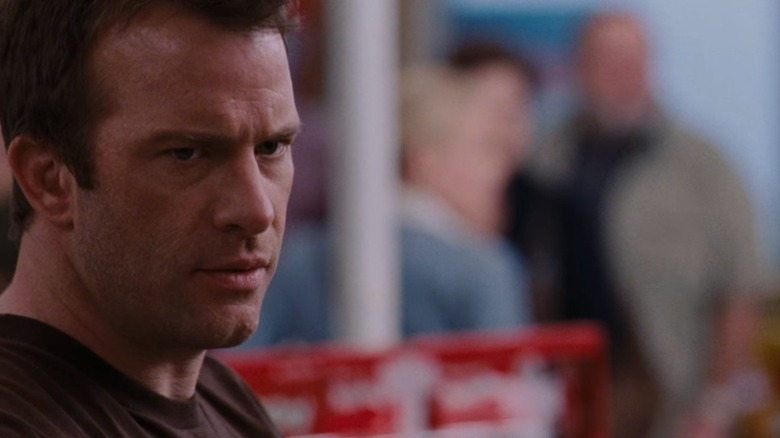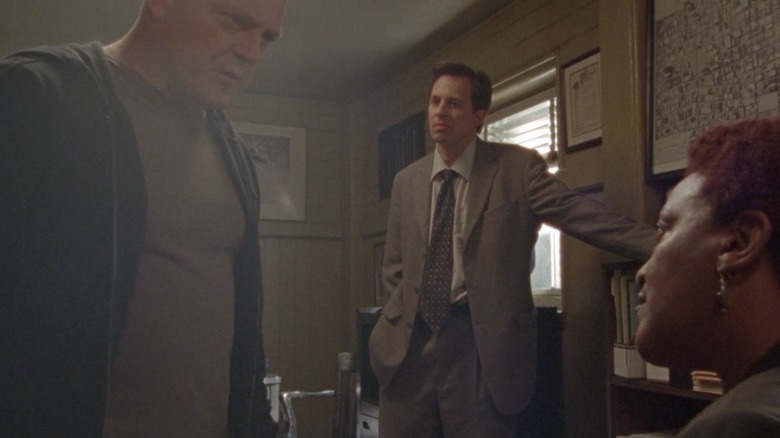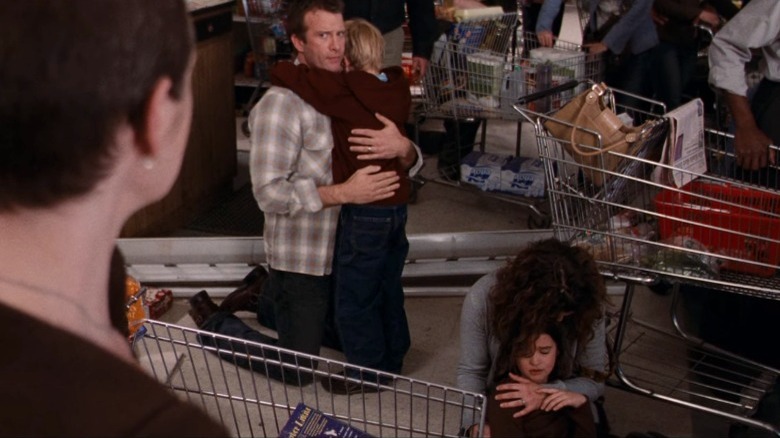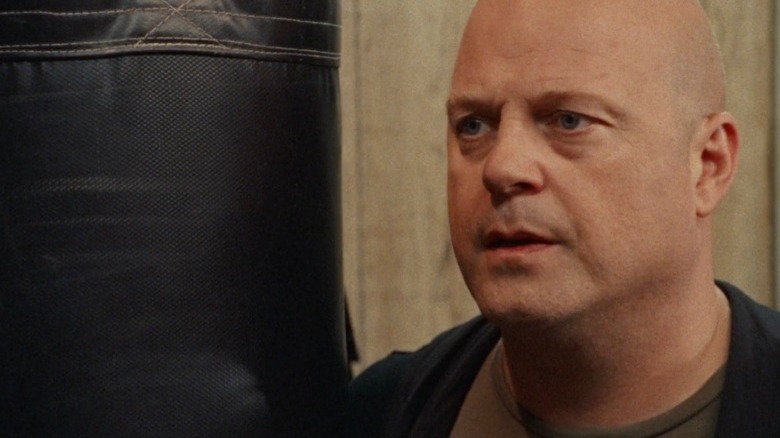Why Frank Darabont Used The Crew Of The Shield To Shoot The Mist [Exclusive]
Frank Darabont's harrowing and faith-shaking horror film "The Mist" doesn't look like other movies. It's not just the story's claustrophobic grocery store setting that makes the film's visuals distinctive, nor is it the eerie vision of a creepy, monster-addled mist that's transported straight from Stephen King's novella. No, "The Mist" features visuals that stand apart from its contemporaries thanks to its very mid-2000s secret weapon: the film used the same shooting crew as "The Shield."
Shawn Ryan's brutal small-screen masterpiece about the seemingly endless depths of corruption in a fictionalized Los Angeles police department ran for seven seasons on FX, and during that time, it gained a reputation for visuals that matched its ruthless, kinetic energy. In honor of the 15th anniversary of "The Mist," /Film's Eric Vespe compiled an oral history of the making of the film, and spoke with many cast and crew members who reminisced about the unique filming style that came courtesy of the same cinematographer and camera operators who brought "The Shield" to life.
'Everything had to be 12% faster'
The surprise partnership between one of the most talked-about shows on TV and one of the most striking and bold King adaptations to date began when Darabont directed an episode of "The Shield." According to Darabont, "The Shield" casting director Deb Aquila was a friend of his, and let Ryan know he was a fan. "He said, 'Does he want to direct an episode?'" Darabont recalls. "I said, 'Oh yeah, why not? I'd love it.'"
While shooting the episode, a season six hour called "Chasing Ghosts," Darabont observed the many ways the show's crew was able to make the series on an accelerated timeline that was not the norm for most TV shows. "You [typically] have eight days to shoot [an episode]. 'The Shield' had seven," he told /Film. As the cinematographer for both projects, Rohn Schmidt, puts it, "everything had to be 12% faster" than usual when making "The Shield."
The crew achieved the show's breakneck production speed through a system of what Darabont, Schmidt, and star Thomas Jane say included documentary-esque lighting, improvised coverage, handheld cameras, and all-in zooms. Schmidt cites Robert Rodriguez's "El Mariachi" as an influence on the sharp zooms, saying that Rodriguez "would start out a scene wide and then would zoom in about a third or halfway through, knowing he was not going to go back, editorially, to that wide shot." On "The Shield," a tense and fast-paced show that often asked viewers to look hard at the eyes of a criminal or corrupt cop, the strategy fit well. "We were doing the same thing. We would roll for a little while, and then when someone wasn't speaking, we would zoom in to the next lens size," Schmidt explained.
'He had a handheld camera and he had one of those office stools'
Darabont's time on "The Shield" apparently coincided perfectly with his plans for "The Mist," which by that point had a roughly $18 million budget for what was at one point envisioned as a $60 million story. After directing "Chasing Ghosts," a process Darabont describes as not much tougher than "directing traffic" thanks to the level of efficiency of all involved, he ended up nabbing Schmidt and camera operators Billy Gierhart and Richie Cantu for "The Mist." According to Darabont, "They had a hiatus coming up and I said, 'You want to come do a movie with me in Shreveport?' And they said, 'Sure.'" Just like that, the film gained the frenetic, handheld visual style that would become its signature.
Not everyone was immediately on board with the crew's non-traditional approach at first. Jane, who plays the film's hero, David, says at first he "was disappointed" that the chosen filmmaking style didn't match up with the more classic aesthetic of past Darabont films like "The Green Mile" and "The Shawshank Redemption." To be fair to him, it sounds like it was an on-set experience that took some getting used to. He told /Film:
"The B-Camera operator had a stool. He had a handheld camera and he had one of those office stools that you can kind of roll around using your feet, with very smooth wheels. And he sat on that f***ing thing and scooted himself all over that grocery store, getting different shots."
'Thank God for Shawn Ryan and The Shield'
Darabont also describes the improvisational style that the crew pioneered on "The Shield," saying, "They'd get in there, Billy with his steadicam and Richie sitting on a skateboard with a camera on his shoulder and just, from take to take, they'd do whatever interested them." This added a certain level of unpredictability to the shoot, as Jane's co-star Sam Witwer pointed out to /Film: "there was never a moment where you could slack off and feel relaxed because you weren't going to be on camera, because maybe it was going to be your close up."
Jane came around to the unorthodox decision eventually, after admitting that he initially feared that the setup would make the movie "look like an episode of television." In the end, he says, "I thought that kinetic energy worked very well for that contained story. I thought it was a good choice." Darabont puts it another way. "I couldn't be the Kubrick wannabe, like the painterly director on 'The Green Mile' or on 'Shawshank,'" he tells /Film. "I had to really shoot from the hip for once. Thank God for Shawn Ryan and 'The Shield.'"
You can read Eric Vespe's full oral history of "The Mist" here.



